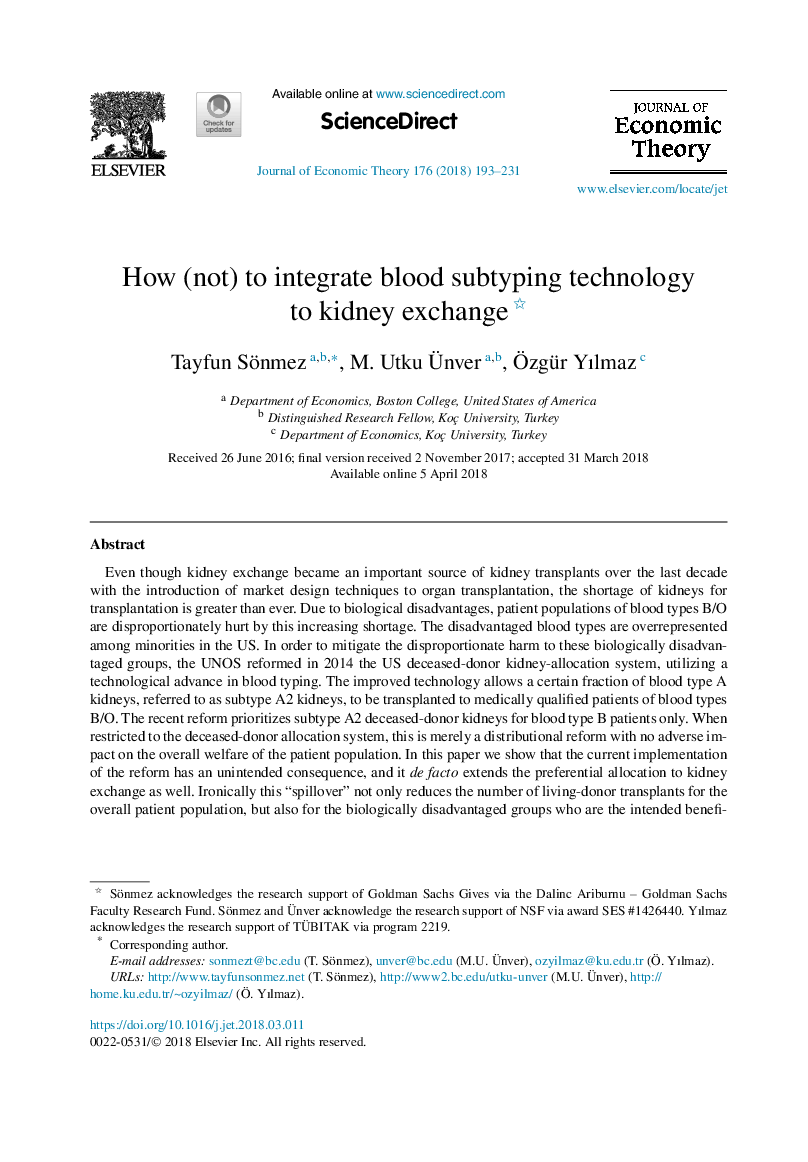| کد مقاله | کد نشریه | سال انتشار | مقاله انگلیسی | نسخه تمام متن |
|---|---|---|---|---|
| 7359085 | 1478729 | 2018 | 39 صفحه PDF | دانلود رایگان |
عنوان انگلیسی مقاله ISI
How (not) to integrate blood subtyping technology to kidney exchange
دانلود مقاله + سفارش ترجمه
دانلود مقاله ISI انگلیسی
رایگان برای ایرانیان
کلمات کلیدی
موضوعات مرتبط
علوم انسانی و اجتماعی
اقتصاد، اقتصادسنجی و امور مالی
اقتصاد و اقتصادسنجی
پیش نمایش صفحه اول مقاله

چکیده انگلیسی
Even though kidney exchange became an important source of kidney transplants over the last decade with the introduction of market design techniques to organ transplantation, the shortage of kidneys for transplantation is greater than ever. Due to biological disadvantages, patient populations of blood types B/O are disproportionately hurt by this increasing shortage. The disadvantaged blood types are overrepresented among minorities in the US. In order to mitigate the disproportionate harm to these biologically disadvantaged groups, the UNOS reformed in 2014 the US deceased-donor kidney-allocation system, utilizing a technological advance in blood typing. The improved technology allows a certain fraction of blood type A kidneys, referred to as subtype A2 kidneys, to be transplanted to medically qualified patients of blood types B/O. The recent reform prioritizes subtype A2 deceased-donor kidneys for blood type B patients only. When restricted to the deceased-donor allocation system, this is merely a distributional reform with no adverse impact on the overall welfare of the patient population. In this paper we show that the current implementation of the reform has an unintended consequence, and it de facto extends the preferential allocation to kidney exchange as well. Ironically this “spillover” not only reduces the number of living-donor transplants for the overall patient population, but also for the biologically disadvantaged groups who are the intended beneficiaries of the reform. We show that minor variations of the current policy do not suffer from this unintended consequence, and we make two easy-to-implement, welfare-increasing policy recommendations.
ناشر
Database: Elsevier - ScienceDirect (ساینس دایرکت)
Journal: Journal of Economic Theory - Volume 176, July 2018, Pages 193-231
Journal: Journal of Economic Theory - Volume 176, July 2018, Pages 193-231
نویسندگان
Tayfun Sönmez, M. Utku Ãnver, Ãzgür Yılmaz,